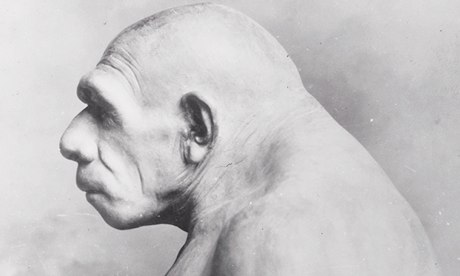
It was the tell-tale tartar on the teeth that told the truth. Or at least, that is what it appeared to do. Researchers - after studying calcified plaque on Neanderthal fossil teeth found in El Sidrón cave in Spain - last year concluded that members of this extinct human species cooked vegetables and consumed bitter-tasting medicinal plants such as chamomile and yarrow.
These were not brainless carnivores, in other words. These were smart and sensitive people capable of providing themselves with balanced diets and of treating themselves with health-restoring herbs, concluded the researchers, led by Karen Hardy at the Catalan Institution for Research and Advanced Studies in Barcelona. Our vision of these long-extinct people needs adjusting, they argued.
But now this tale of ancient tartar has taken a new twist with two researchers at London's Natural History Museum challenging the Barcelona group's conclusions. Dental research does not prove that Neanderthals were self-medicating, vegetable-eating sophisticates, one told the Observer. There are other, equally valid but decidedly more grisly explanations to account for those microscopic fragments of herbs and plants found in Neanderthal teeth.
In a paper by Laura Buck and Chris Stringer and published in the latest edition of Quaternary Science Reviews, Stringer argues that the tiny pieces of plant found in Neanderthal teeth could have come from a very different source. They may well have become embedded in the stomach contents of deer, bison and other herbivores that had then been hunted and eaten by Neanderthals.
"Many hunter-gatherers, including the Inuit, Cree and Blackfeet, eat the stomach contents of animals such as deer because they are good source of vitamin C and trace elements," said Stringer. "For example, among the Inuit, the stomach contents of an animal are considered a special delicacy with a consistency and a flavour that is not unlike cream cheese. At least that is what I am told."
The crucial point about the stomach contents of grazing animals is that they are filled with fragments of the plants that those herbivores had consumed shortly before they were stalked and killed. When those contents are then chewed and eaten, the tiny pieces of grass and herbs are transferred to their hunter's teeth and get embedded there. Then, when their devourers are themselves killed, or die of natural causes, shortly afterwards, those plant fragments are preserved in their teeth for later analysis by modern palaeontologists. "The mistake is to think that because you find plant fragments in teeth that they must have got there because these carnivores - in this case Neanderthals - had consumed them as part of a carefully constructed diet or were taken because it was realised that certain herbs and grasses had health-promoting properties," added Buck. "In fact, they may have got there purely because Neanderthals liked to eat the stomach contents of some of the animals they killed."
This point is backed by Stringer. "Neanderthals lived in Europe during many cold periods and it is interesting to note that many modern human hunter-gatherers who eat stomach contents today, such as the Inuit, also live in northerly regions. It is a behaviour often displayed by a cold-adapted species, in other words. And if you have gone to the time and trouble of hunting a large herbivore, you would not miss out on a nutritious part such as the stomach."
However, Stringer and Buck stress that they are not arguing that Neanderthals definitely did not eat vegetables or could not have used certain herbs as medicines. "What we are saying is that the evidence of plant fragments in Neanderthal teeth is simply not strong enough to prove that they did so. There are other explanations, including the proposal that they ate these organs of the animals they killed. They had the stomach for it, if you want to put it that way."



. . . looks familiar somehow.
Oh yeah, he used to own a biker bar in an otherwise perfectly nice 'hood I once lived in.
All the cats with tats and colors used called him "Knuckle," 'Nuck for short.
It was an inside joke any Harley rider would get. :-)
There was another guy they called " 'Loid" or "Mongo' " take your pick; then of course there was "Dr. Shriek" and who could possibly forget "ThrockMorton (Norton)."
Ah, the '70s . . .